CD V-742 Pocket Dosimeters (ca. 1958-2000)
The CD V-742 was a direct-reading (self-reading) pocket dosimeter that measured exposures from 0-200 roentgen (R). The 1959 revision of Technical Bulletin TB-11-20 Radiological Instruments for Civil Defense identified the CD-V-742 as one of three civil defense dosimeters, the other two being the CD V-138 and the CD V-730. According to the Bulletin, the CD V-742 superseded the CD V-740. Four years later, the Handbook for Radiological Monitors (April 1963) stated that the CD V-742 had replaced both the CD V-730 and the CD V-740. It is somewhat odd that a document published in 1959 would imply that the CD V-742 superseded anything given the fact that the first CD V-742s were procured in FY 1961, at least according to the FY 1961 annual report.
Quoting CPG 1-30: "The dosimeter provided for general operational use is the CDV-742 which has a measurement Range of up to 200 roentgens. Until these were available in sufficient quantity, the CDV-730 with a range of 0 to 20 roentgens and the CDV-740 with a range of 0 to 100 roentgens had been furnished. They are still usable. Dosimeters resemble a fountain pen in size and shape. The CDV-742 can be identified by its bronze or gold colored pocket clip. The CDV-742 high range dosimeter is the standard for use in shelter, WER [Weapons Effects Reporting] Stations, emergency service organizations and vital facilities. They would also be used by the millions of civil preparedness workers that would be needed for recovery operations during the postattack period when emergence from shelter is possible."
Manufacturers: Bendix, Landsverk, Victoreen
Number manufactured: Approximately 3,120,000
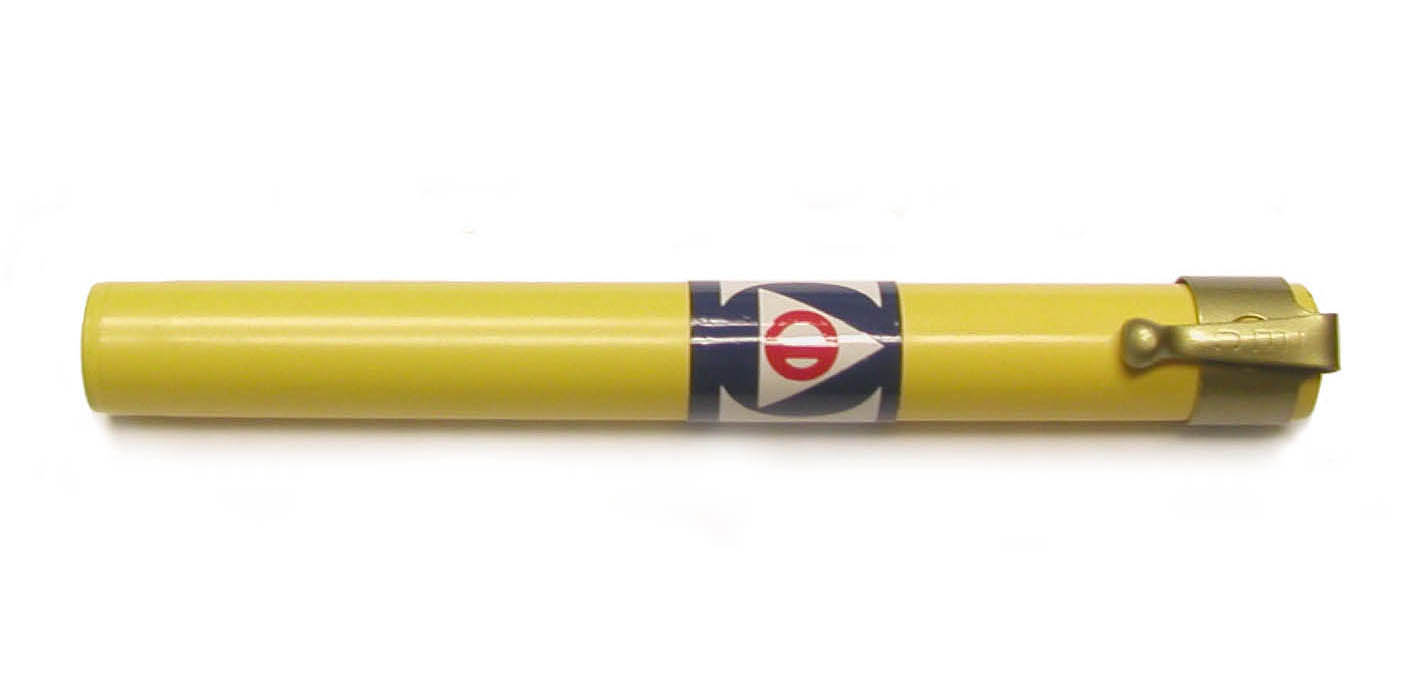
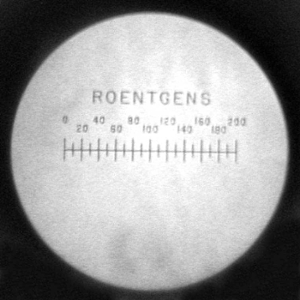
A production run example of the CD V-742 manufactured by the Landsverk Electrometer Corporation (LEC). Size: 4.25" long, 0.5" diameter. Donated by the Northern Ohio Chapter of the Health Physics Society courtesy of John Wills.
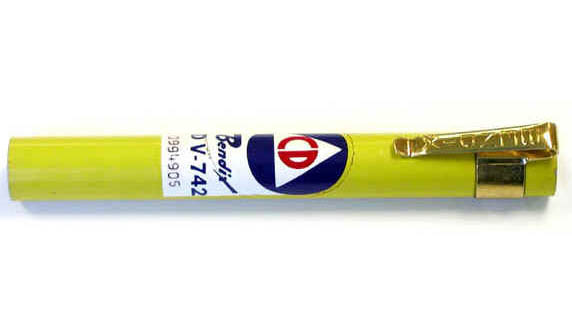
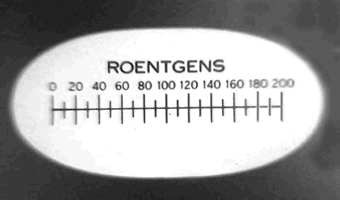
A production run example of the CD V-742 manufactured by Bendix. Size: 4.25" long, 0.5" diameter.
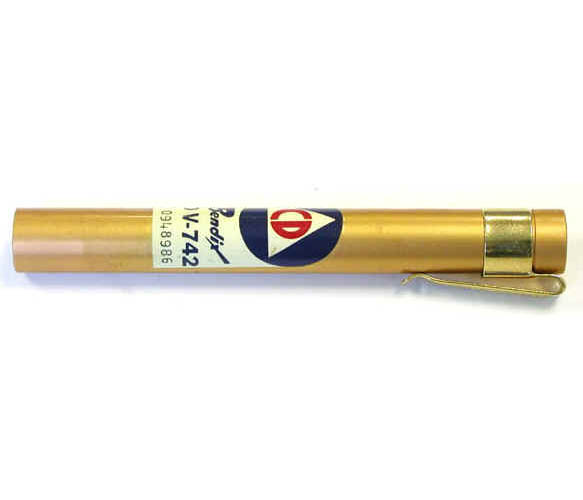
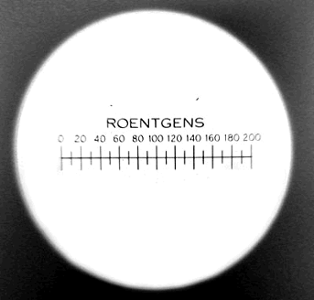
A production run example of the CD V-742 manufactured by Bendix. Size: 4.25" long, 0.5" diameter. A problem with the civil defense yellow paint was that it would often chip and flake. To avoid this, Bendix made some anodized aluminum barrel dosimeters (the E and F series). The anodized gold color was the closest they could come to the standard yellow.
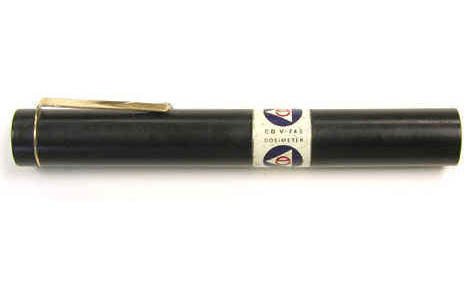
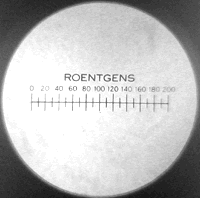
A rare example of the black plastic CD V-742 manufactured by Bendix in the early 1960s. It was the first dosimeter made for civil defense purposes that employed a plastic barrel. Size: 4 3/8" long, 7/16" diameter.
Bendix wanted to make these plastic CD V-742s to save money—dosimeters are cheaper and faster to fabricate out of plastic than metal. Not only that, the low effective atomic number of the plastic results in a flatter energy response! One problem was that the black plastic looked terrible when painted yellow. As such, Bendix was allowed to produce black civil defense dosimeters rather than the standard yellow kind. My understanding is that the plastic Bendix unit never went into full production, nor was it ever distributed. The example shown here was provided by Carl Siebentritt who worked on this dosimeter at Bendix.
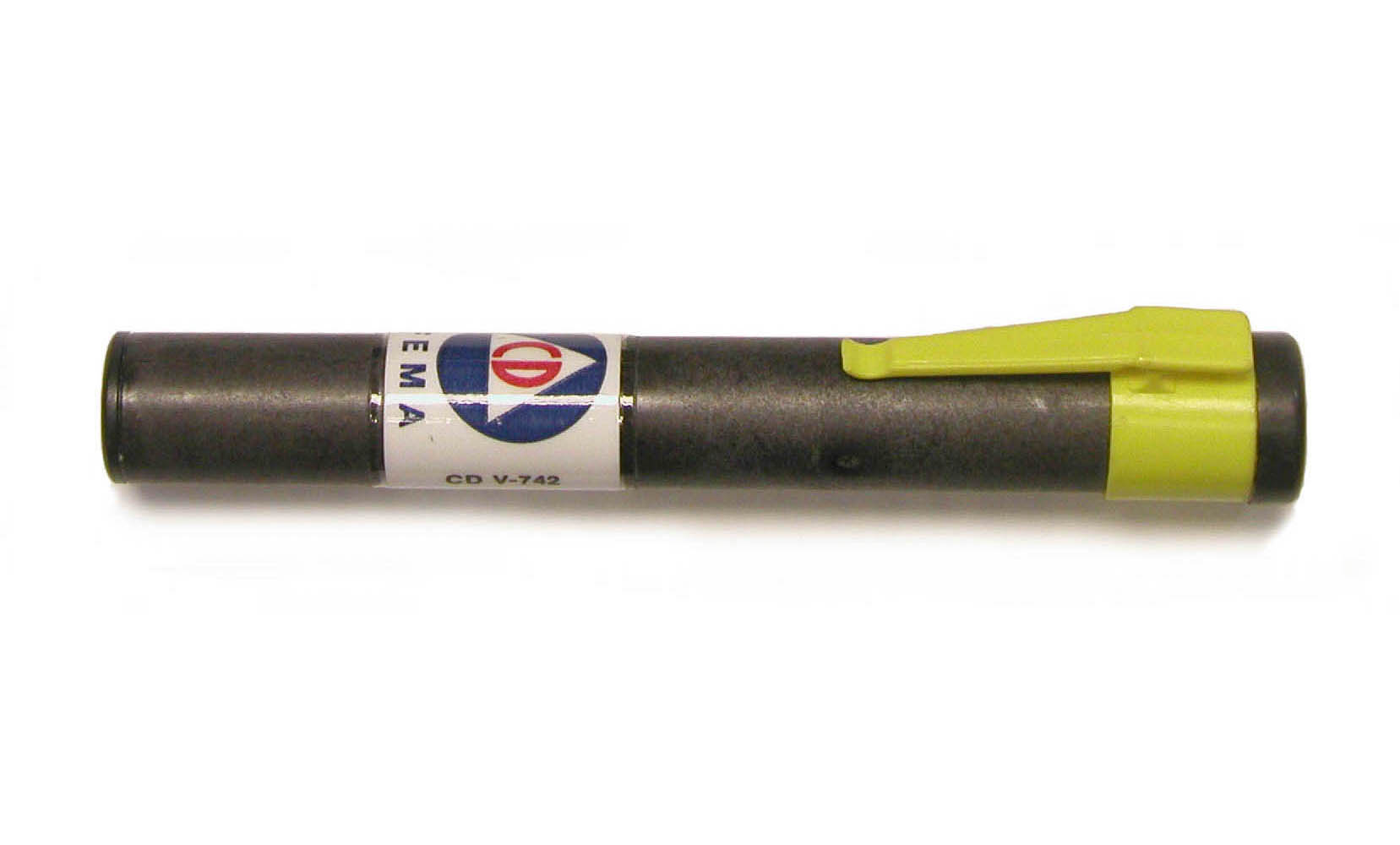
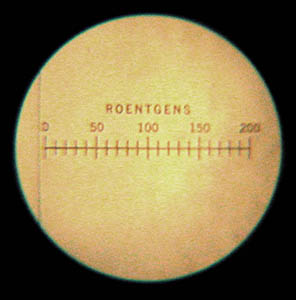
The above is a more recent version of a CD V-742 dosimeter constructed of conductive plastic. It uses a carbon fiber instead of the standard quartz fiber. Made for FEMA by Victoreen (ca. 1987/1988). The idea for this new generation of plastic dosimeters originated with Carl Siebentritt at FEMA, the guy who worked on the Bendix version of a plastic dosimeter during the 1960s. Victoreen was awarded the first contract to produce them.
Approximately 75,000 of these were manufactured but there were issues with the quality control. Among other things, the dosimeter rejection rate due to Victoreen's internal QC program had driven the cost from the target $20 to $30 range up to $270 apiece. After one year, FEMA took the position that Victoreen had defaulted on the contract, so they sent the contract and the manufacturing equipment used by Victoreen to the Government Owned Contractor Operated (GOCO) facility in Rolla, North Dakota. The latter was sometimes known as the William Langer Jewel Bearing facility. In 1996 it was privatized and became Arrow-Tech.
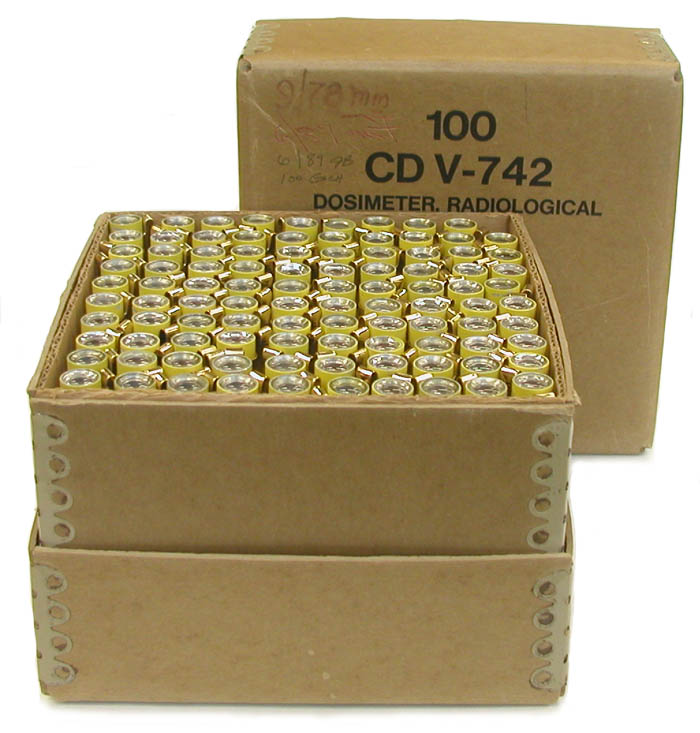
An early version of FEMA's plastic dosimeters was used by the US Army in the first Gulf War. Unfortunately, the plastic was permeable to air and the high humidity that was sometimes encountered in the gulf caused problems with the dosimeter insulators. The quick fix was to epoxy aluminum foil around the dosimeter barrels as a vapor barrier. Shortly thereafter, the original plastic formulation was replaced with an impermeable liquid crystal plastic polymer. The following photo shows a 0-600 roentgen plastic dosimeter with aluminum foil around the barrel (donated to the collection by FEMA). The range is the same as that of the CD V-746 dosimeter that came with the Bendix Family Radiation Measurement Kit. Arrow-Tech, the company that currently manufactures plastic dosimeters for FEMA, designates their 0-600 roentgen dosimeter as the Model 746.

Approximate Cumulative Procurement, Inventory and Distribution of CD V-742s*
| Fiscal Year | Procured | Inventoried | Distributed |
|---|---|---|---|
| FY 1960 | - | - | - |
| FY 1961 | 24 | 24 | |
| FY 1962 | 142,436 | 142,407 | 29 |
| FY 1963 | 2,693,094 | ||
| FY 1964 | 3,117,201 | ||
| FY 1965 | 3,117,201 | 898,119 | 1,781,606 |
| FY 1966 | 3,117,201 | 142,701 | 1,878,269 |
| FY 1967 | 3,117,201 | 240,514 | 1,928,978 |
| FY 1968 | 3,117,201 | 415,996 | 1,959,765 |
| FY 1969 | 3,117,201 | 391,485 | 2,152,651 |
| FY 1970 | 3,117,201 | 384,814 | 2,235,300 |
| FY 1971 | 3,117,201 | 471,177 | 2,277,015 |
| FY 1972 | 3,117,201 | 458,788 | 2,294,833 |
| FY 1973 | 3,117,201 | ||
| FY 1974 | 3,117,201 | 409,525 | 2,704,406 |
*The numbers in the above table should be considered approximate. I compiled them from data in the Annual Statistical Reports of the OCDM, OCD and DCPA. By "procured," I mean delivered by the manufacturer to the OCDM, OCD or DCPA. "Inventoried" means stored in a Federal (rather than state) warehouse ready for distribution. "Distributed" means sent to the end user. The latter primarily means the states, but also various federal agencies and even foreign governments. The number of procured instruments may be greater than the combined number of inventoried and distributed instruments for a variety of reasons: some may have been sent back to the manufacturer, some may have been disposed of, the numbers might be incorrect, etc.
Dosimeters donated by FEMA courtesy of Carl Siebentritt and the Northern Ohio Chapter of the Health Physics Society courtesy of John Wills.
References
- Art Lucas, personal communication.
- Carl Siebentritt, personal communication.
- Marlow Stangler, personal communication.
- Office of Civil and Defense Mobilization, Radiological Instruments for Civil Defense Technical Bulletin TB-11-20, Revised June 1959.
- Department of Defense, Office of Civil Defense, Handbook for Radiological Monitors FG-E-5.9, April 1963.
- Federal Emergency Management Agency. Guide for the Design and Development of a Local Radiological Defense Support System. CPG 1-30. June 1981.
